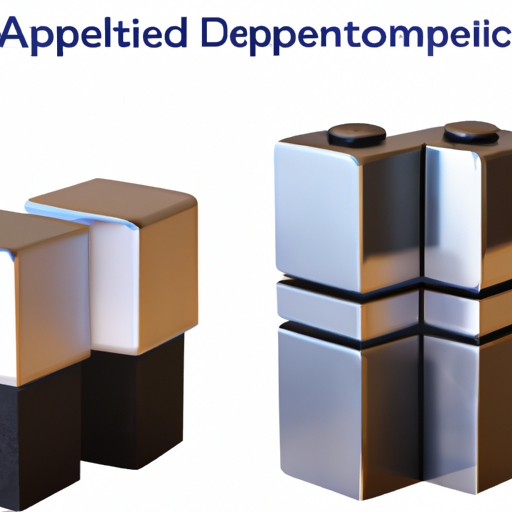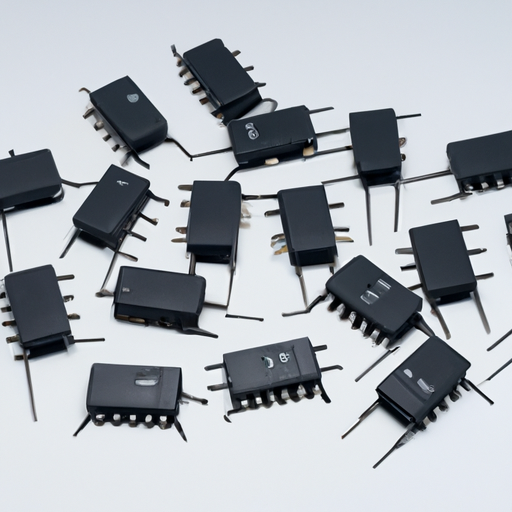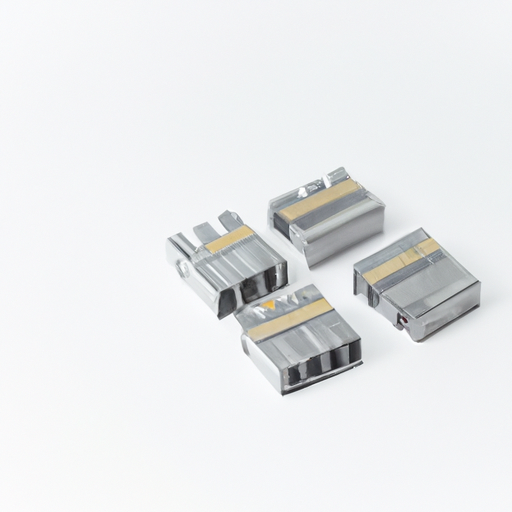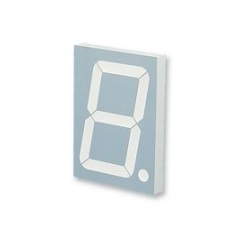What is the current situation of the inductor industry?
Current Situation of the Inductor Industry
I. Introduction
Inductors are passive electronic components that store energy in a magnetic field when electrical current flows through them. They play a crucial role in various electronic circuits, including filters, oscillators, and power supplies. The inductor industry is a vital segment of the broader electronics market, supporting the functionality of countless devices, from consumer electronics to automotive systems. This report aims to analyze the current state of the inductor industry, exploring market trends, technological advancements, supply chain dynamics, competitive landscapes, challenges, and future opportunities.
II. Overview of the Inductor Market
A. Market Size and Growth Trends
The inductor market has experienced significant growth over the past decade, driven by the increasing demand for electronic devices and advancements in technology. Historical growth patterns indicate a steady rise in market valuation, with the current market estimated to be worth several billion dollars. According to industry reports, the global inductor market is projected to continue its upward trajectory, with a compound annual growth rate (CAGR) of around 5-7% over the next five years. This growth is fueled by the proliferation of smart devices, electric vehicles (EVs), and renewable energy applications.
B. Key Segments of the Inductor Market
The inductor market can be segmented into various categories based on type and application.
1. **Types of Inductors**:
- **Air Core Inductors**: These inductors are known for their high-frequency performance and are commonly used in RF applications.
- **Iron Core Inductors**: These are used in power applications due to their ability to handle higher currents.
- **Ferrite Core Inductors**: These inductors are popular in consumer electronics for their compact size and efficiency.
2. **Applications**:
- **Consumer Electronics**: The demand for inductors in smartphones, tablets, and laptops continues to rise.
- **Automotive**: With the shift towards electric and hybrid vehicles, the automotive sector is becoming a significant consumer of inductors.
- **Telecommunications**: Inductors are essential in communication devices, supporting signal processing and power management.
C. Geographic Distribution of the Market
The inductor market is geographically diverse, with major regions including North America, Europe, and Asia-Pacific.
1. **North America**: This region is home to several leading manufacturers and has a strong demand for high-performance inductors in automotive and telecommunications.
2. **Europe**: The European market is characterized by stringent regulations and a focus on sustainability, driving innovation in inductor design.
3. **Asia-Pacific**: This region dominates the global inductor market, primarily due to the presence of major electronics manufacturers in countries like China, Japan, and South Korea. Emerging markets in Southeast Asia are also contributing to growth.
III. Technological Advancements
A. Innovations in Inductor Design and Materials
The inductor industry is witnessing rapid technological advancements, particularly in design and materials.
1. **Miniaturization and High-Frequency Performance**: As electronic devices become smaller and more complex, the demand for miniaturized inductors that can operate at high frequencies is increasing. Manufacturers are developing compact inductors that maintain performance without compromising size.
2. **Use of New Materials**: Innovations in materials, such as nanocrystalline cores, are enhancing the efficiency and performance of inductors. These materials offer improved magnetic properties, leading to better energy storage and reduced losses.
B. Impact of Industry 4.0 and IoT on Inductor Manufacturing
The advent of Industry 4.0 and the Internet of Things (IoT) is transforming inductor manufacturing.
1. **Automation and Smart Manufacturing Processes**: Manufacturers are adopting automation technologies to streamline production processes, reduce costs, and improve quality. Smart manufacturing systems enable real-time monitoring and data analysis, enhancing operational efficiency.
2. **Integration with Smart Devices and Systems**: As the demand for smart devices grows, inductors are increasingly integrated into IoT applications. This integration requires inductors that can support low power consumption and high reliability.
IV. Supply Chain Dynamics
A. Overview of the Inductor Supply Chain
The inductor supply chain involves several key components, including raw materials sourcing, manufacturing processes, and distribution channels.
1. **Raw Materials Sourcing**: The primary materials used in inductor manufacturing include copper wire, magnetic cores, and insulation materials. Sourcing these materials is critical for maintaining production efficiency and cost-effectiveness.
2. **Manufacturing Processes**: The manufacturing of inductors involves winding wire around a core, followed by insulation and testing. Advances in manufacturing technology are enabling faster production times and improved quality control.
3. **Distribution Channels**: Inductors are distributed through various channels, including direct sales to manufacturers, distributors, and online platforms. The rise of e-commerce is changing how inductors are marketed and sold.
B. Challenges Faced in the Supply Chain
The inductor industry faces several challenges within its supply chain.
1. **Global Supply Chain Disruptions**: Events such as the COVID-19 pandemic have highlighted vulnerabilities in global supply chains, leading to delays and increased costs.
2. **Fluctuations in Raw Material Prices**: The prices of raw materials can be volatile, impacting production costs and profit margins for manufacturers.
3. **Trade Policies and Tariffs**: Changes in trade policies and tariffs can affect the cost of importing materials and exporting finished products, creating uncertainty for businesses.
V. Competitive Landscape
A. Key Players in the Inductor Industry
The inductor industry is characterized by a mix of established players and emerging companies.
1. **Major Manufacturers**: Companies such as Murata Manufacturing, TDK Corporation, and Vishay Intertechnology dominate the market, holding significant market shares due to their extensive product portfolios and global reach.
2. **Emerging Companies and Startups**: New entrants are focusing on niche markets and innovative products, often leveraging advanced technologies to differentiate themselves.
B. Strategies Employed by Leading Companies
Leading companies in the inductor industry are employing various strategies to maintain their competitive edge.
1. **Mergers and Acquisitions**: Companies are pursuing mergers and acquisitions to expand their product offerings and market presence.
2. **Research and Development Investments**: Significant investments in R&D are driving innovation, enabling companies to develop advanced inductors that meet evolving market demands.
3. **Sustainability Initiatives**: As environmental concerns grow, many companies are adopting sustainable practices in their manufacturing processes and product designs.
VI. Market Challenges and Opportunities
A. Challenges Facing the Inductor Industry
The inductor industry faces several challenges that could impact its growth.
1. **Competition from Alternative Technologies**: Inductors face competition from alternative technologies, such as capacitors, which may offer similar functionalities in certain applications.
2. **Environmental Regulations and Sustainability Concerns**: Increasing regulations regarding environmental impact are pushing manufacturers to adopt sustainable practices, which can be costly and complex.
B. Opportunities for Growth
Despite the challenges, there are significant opportunities for growth in the inductor industry.
1. **Increasing Demand for Electric Vehicles (EVs)**: The shift towards electric vehicles is driving demand for inductors, particularly in power management and charging systems.
2. **Growth in Renewable Energy Applications**: The expansion of renewable energy sources, such as solar and wind, is creating new opportunities for inductors in energy conversion and storage systems.
3. **Expansion in Consumer Electronics and Smart Devices**: The ongoing growth in consumer electronics and smart devices presents a lucrative market for inductors, as these devices require efficient power management solutions.
VII. Future Outlook
A. Predictions for the Inductor Market Over the Next 5-10 Years
The inductor market is expected to continue its growth trajectory over the next 5-10 years, driven by technological advancements and increasing demand across various sectors. The market is likely to see a shift towards more compact and efficient inductors that can support high-frequency applications.
B. Potential Technological Disruptions
Emerging technologies, such as advanced materials and manufacturing techniques, could disrupt the inductor market. Innovations in nanotechnology and 3D printing may lead to the development of new inductor designs that offer enhanced performance and reduced costs.
C. Strategic Recommendations for Industry Stakeholders
To capitalize on growth opportunities, industry stakeholders should focus on:
1. **Investing in R&D**: Continued investment in research and development will be crucial for staying ahead of technological advancements and meeting market demands.
2. **Adopting Sustainable Practices**: Embracing sustainability initiatives will not only comply with regulations but also appeal to environmentally conscious consumers.
3. **Exploring New Markets**: Expanding into emerging markets and diversifying product offerings can help mitigate risks associated with market fluctuations.
VIII. Conclusion
In summary, the inductor industry is currently experiencing significant growth, driven by technological advancements and increasing demand across various applications. While challenges such as supply chain disruptions and competition from alternative technologies exist, the opportunities for growth in sectors like electric vehicles and renewable energy are substantial. As the industry evolves, adaptability and innovation will be key to success in the dynamic landscape of the inductor market.
IX. References
A comprehensive list of sources and literature used for research, including industry reports, market analysis documents, and academic articles, would be included here to support the findings and insights presented in this report.







